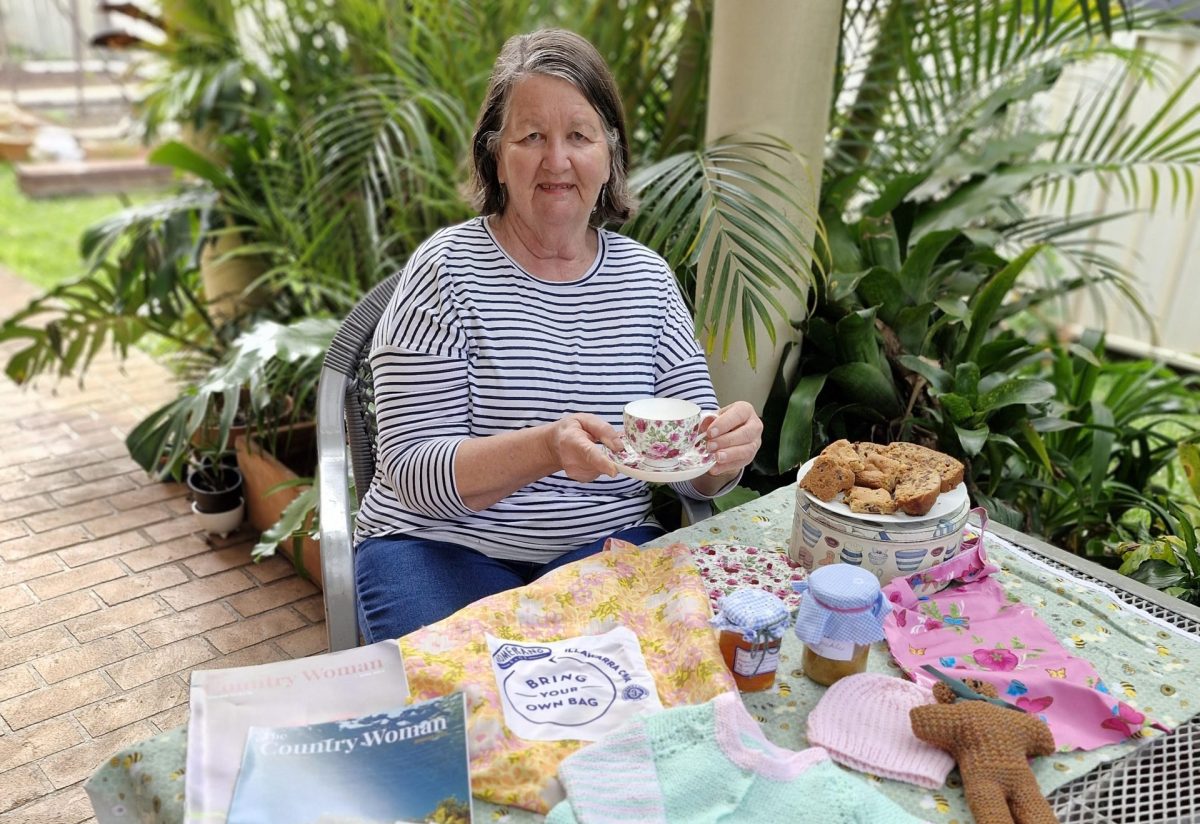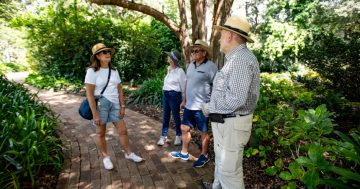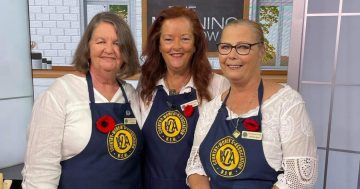
Keiraville CWA president Liz Corfield says the organisation is known for more than just cakes and craft. Photo: Supplied.
Rail crossing boom gates, reusable shopping bags and emergency relief funds for disaster victims have one thing in common – they are all causes either instigated or supported by the Country Women’s Association (CWA).
“Most people know us through our cake and craft stalls but our achievements go far deeper than that,” says Keiraville CWA president, Liz Corfield.
Her branch and the other 10 branches in the Illawarra will be flying their flags high during CWA Awareness Week (1-7 September) to highlight the organisation’s core values of compassion and service to the community it has upheld since its inception in 1922.
This year’s theme is violence against women and it is left to individual branches to decide what they will be showcasing during the week.
“Keiraville will have displays at Wollongong and Corrimal libraries along with selected items we’ve produced throughout the year,” says Liz.
CWA of NSW president Joy Beames says branches in the Illawarra are a very important part of the organisation statewide.
“The Illawarra branches have advocacy issues from time to time, but they’re always there supporting the rest of the state,” she said.
Liz joined the Keiraville branch in 2016 after being inspired by ‘boomerang bags’ she saw on a Kiama CWA stall at the Kiama Farmers’ Market.
The bags are made from recycled material from items like sheets and pillow cases with the aim to replace single-use plastic bags.
“It struck me as a great idea and I ended up joining the branch because I was looking for something meaningful to do after I retired,” says Liz.
“They are a marvellous group of women who are fun to be with and at the same time committed to helping the wider community.”
Over the past eight years, Keiraville member numbers have jumped from 21 to 56, which Liz puts down to a run of terrific state presidents who reinvigorated the organisation and its appeal in the community.
History regards CWA as “arguably the most influential women’s organisation in NSW in the 20th century”, according to the Australian Women’s Register.
And that influence is still strong, according to several members. They say CWA executives are consulted by government on most topics related to women and family.
The movement began on a tragic note in 1911 when Grace Emily Munro, who lived on a cattle station near the small New England town of Bingara, transported one of her three children to hospital in Sydney by horse and buggy for an emergency appendectomy.
While she was absent her youngest child became ill and died.
It left Grace determined to improve the availability of medical help for outback families, which led to the official formation of CWA in NSW in 1922. By the mid-30s, there were branches and associations across Australia.
“CWA’s lobbying to improve the health and welfare for isolated families in rural Australia had a significant flow-on effect for the whole population,” says Liz.
“It gave us baby health centres, women’s rest rooms, rail crossing boom gates and maternity wards in hospitals, and we are always advocating for different causes at our annual state conferences.
“This year we’ll be putting rural crime, housing and health reform on the agenda.”
How does she see CWA’s future in an environment where many volunteer organisations are struggling to stay afloat?
“CWA got a little bogged down in the mid-80s, but strong leadership pulled us through by ensuring we are constantly evolving to keep up with social change and the needs of the community,” Liz says.











